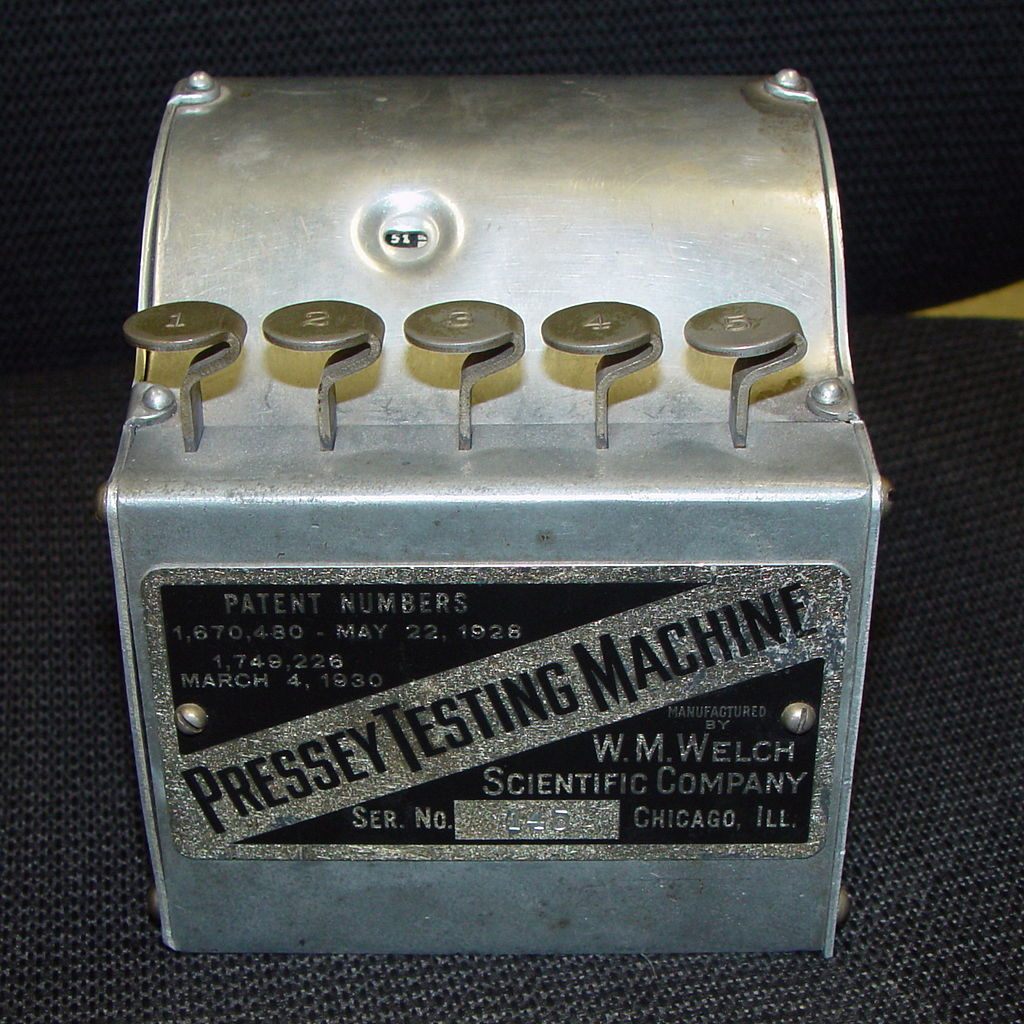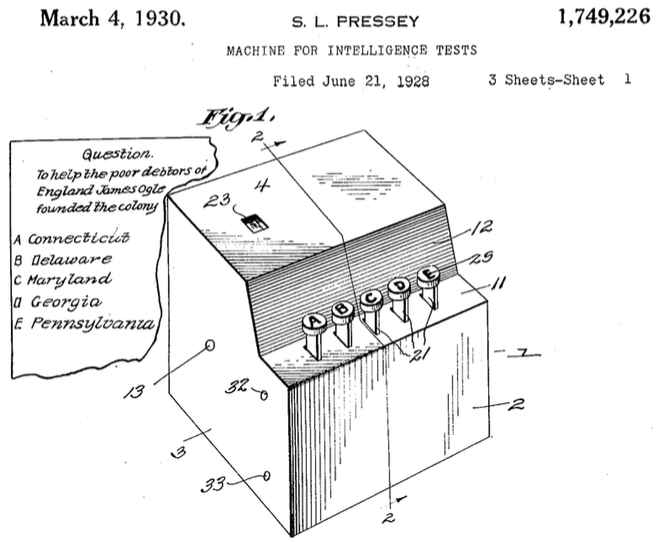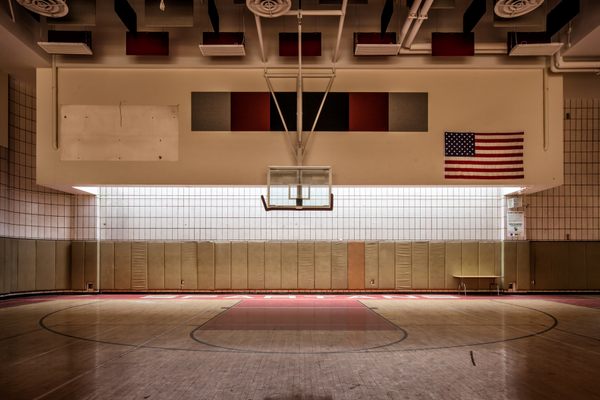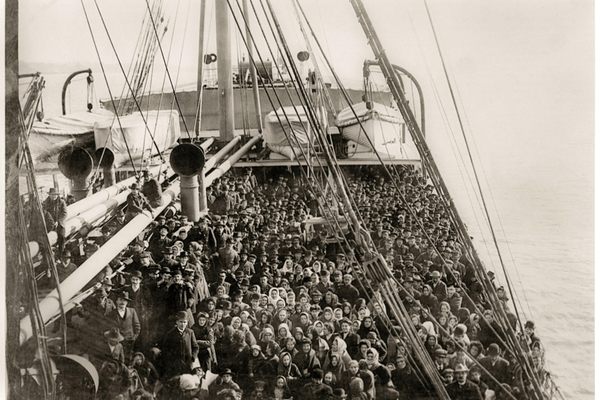Objects of Intrigue: Teaching Machines of the 20th Century

Sidney Pressey’s 1920s teaching machine. (Photo: Gomer Bolstrood/Public domain)
Classrooms where each student learns by staring intensely at their own gadget may seem to be a millennial phenomenon. But individual machines designed for educational enrichment have been around for almost a hundred years—albeit with more cranks and levers than your average MacBook Air.
In the 1920s, Ohio State University educational psychology professor Sidney Pressey developed a shoebox-sized teaching machine to allow students to test their knowledge without a teacher’s direct guidance. The device, which Pressey called a “machine for intelligence tests” and an “Automatic Teacher,” contained a roll of paper printed with a test key, which was displayed one question at a time. Presented with each question, a student would press one of four to five numbered or lettered selectors to indicate their answer, then pull a lever to submit it.
If the answer was correct, the next question would appear. If not, the same question stayed, and the student would have to try again. Only the right answer would move the roll of paper forward.

A diagram from Pressey’s teaching machine patent, filed in 1928. (Image: Google Patents)
It all sounds a little dry, but at the time, this automation of learning tickled the fancies of more pedagogically inclined folks. As University of British Columbia Media and Technology Studies professor Stephen Petrina notes, educators who used the machine when it was exhibited in the 1920s enjoyed “something of a psychological thrill when they hit the right key.”
Although the Automatic Teacher was capable of eliciting excitement, it did not catch on. Convinced of his machine’s merits, Pressey worked tirelessly for years to improve it, get financial backing for it, and introduce it to classrooms far and wide. But educators “failed to grasp the value of automating the processes of teaching and learning,” writes Petrina.
The machine fizzled. Reflecting on the whole disappointing experience in the journal School and Society in 1932, Pressey said: “The writer has found from bitter experience that one person alone can accomplish relatively little, and he is regretfully dropping further work on these problems.” Nonetheless, he maintained the prediction he expressed in a 1926 letter that “extensive use of mechanical aids in education is a probable development of the near future.”

B.F. Skinner’s Teaching Machine. (Photo: Silly rabbit/Wikipedia)
Pressey may not have experienced the commercial success for which he had hoped, but he did make an impact that would resonate decades later. In the 1950s, behavioral psychologist B.F. Skinner—known as the father of operant conditioning—debuted what he referred to as his “teaching machine.” Skinner’s patent for the device, filed in 1958, described it as an “apparatus for the teaching of arithmetic, spelling, and so forth.”
The machine, a metal box with a small window and roll of paper on the top and a lever on the side, displayed either a question, incomplete phrase, or math problem in the window. The student would write his or her answer on the roll of paper, press the lever, and their answer would disappear as the solution was revealed in the window.
The aim of the machine was to keep students engaged and interested in learning by allowing them to work at an individual pace while providing instant feedback. Instead of handing in test papers, then waiting a day for a teacher to grade them, students would know immediately whether their answer was right or wrong. This approach, Skinner said in a 1956 instructional video about his teaching machines, kept a student “free of anxiety about his success or failure.”
Teaching machines turned learning into a game with thousands of easily accessible questions—essentially, the levels of a game. “In studying by machine something is happening all the time,” wrote Skinner in 1960. Students were challenged in a series of small steps and experienced the positive feelings of being right and earning the opportunity to advance to the next level. The acquisition of knowledge happened along the way. “Many of them say that it is a weird experience,” said Skinner: “they know something at the end of the hour which they cannot remember having learned.”
As with Pressey’s machine, Skinner’s version was not a wild success. In a lecture delivered in 1965, Skinner reflected on the adoption and usage of his teaching machines, which he regarded as “widely misunderstood.” The machines were not, he said, “simply devices which mechanize functions once served by human teachers.” The aim was to make both teachers’ and students lives easier by letting a machine handle some of the rote and automated tasks involved in learning.
The relationship between the machine and its user was intended to be an interaction between the person who programmed the answers and the student. “It is the author of the program, not the machine, who teaches,” said Skinner in his video. The machines were intended to be a sort of interactive textbook that would allow living, breathing teachers in the classroom to identify areas in which individual students were having trouble.
Though they were regarded as little more than diverting curiosities during their time, Pressey and Skinner’s teaching machines are fascinating in the context of current debates over the role of technology in the classroom. Ultimately, the conclusion is the same: regardless of the complexity of their innards, machines are best regarded as learning tools rather than teachers.















Follow us on Twitter to get the latest on the world's hidden wonders.
Like us on Facebook to get the latest on the world's hidden wonders.
Follow us on Twitter Like us on Facebook